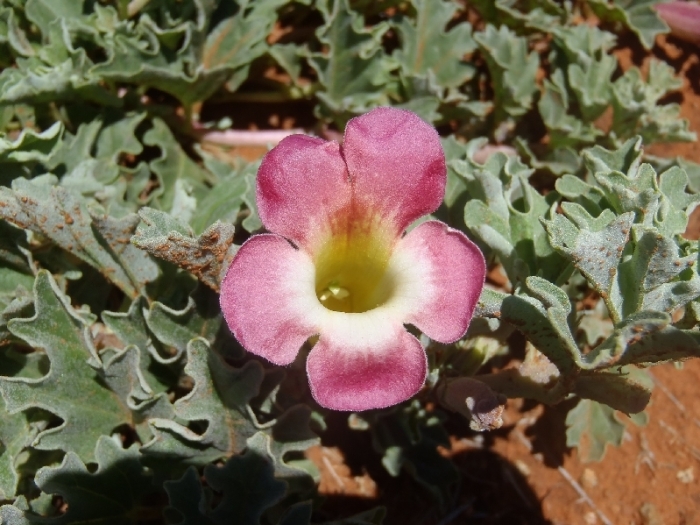Devil’s Claw
(Harpagophytum procumbens)
Devil’s Claw (Harpagophytum procumbens)
/
/

Nicola van Berkel
CC BY-SA 4.0
Image By:
Nicola van Berkel
Recorded By:
Copyright:
CC BY-SA 4.0
Copyright Notice:
Photo by: Nicola van Berkel | License Type: CC BY-SA 4.0 | License URL: http://creativecommons.org/licenses/by-sa/4.0/ | Rights Holder: Nicola van Berkel | Publisher: iNaturalist | Date Created: 41259 |

















Estimated Native Range
Summary
Harpagophytum, commonly known as devil’s claw, is a perennial herb native to the savannas and grasslands of southern Africa, particularly in Namibia, South Africa, and Botswana. It thrives in arid environments with deep, sandy soils and low annual rainfall. The plant typically has a sprawling habit with prostrate stems and can spread out over the ground. It produces distinctive, hook-like fruit that has earned it the name devil’s claw. The flowers are tubular, ranging in color from red to purple, and bloom during the summer months. The tuberous roots of Harpagophytum procumbens are harvested for their medicinal properties, which are reputed to reduce pain and inflammation.
Devil’s claw is valued for its medicinal uses, particularly in the treatment of arthritis and other joint pains. It is not commonly grown in gardens due to its specific soil requirements and low ornamental value, but it may be of interest to those who cultivate medicinal plants. When grown, it requires well-drained, sandy soil and minimal water once established, mimicking its native desert-like conditions. It is important to note that Harpagophytum procumbens can become potentially invasive in some regions outside its native range, so gardeners should check local regulations before planting.CC BY-SA 4.0
Devil’s claw is valued for its medicinal uses, particularly in the treatment of arthritis and other joint pains. It is not commonly grown in gardens due to its specific soil requirements and low ornamental value, but it may be of interest to those who cultivate medicinal plants. When grown, it requires well-drained, sandy soil and minimal water once established, mimicking its native desert-like conditions. It is important to note that Harpagophytum procumbens can become potentially invasive in some regions outside its native range, so gardeners should check local regulations before planting.CC BY-SA 4.0
Plant Description
- Plant Type: Herb
- Height: 1.5-2 feet
- Width: 3-5 feet
- Growth Rate: Slow
- Flower Color: Pink, Purple
- Flowering Season: Summer, Fall
- Leaf Retention: Deciduous
Growth Requirements
- Sun: Full Sun
- Water: Low
- Drainage: Fast
Common Uses
Drought Tolerant, Low Maintenance
Natural Habitat
Savannas and grasslands of southern Africa
Other Names
Common Names: Devil’s Claw, Wood Spider, Grappleplant
Scientific Names: , Harpagophytum procumbens, Harpagophytum burchellii,
GBIF Accepted Name: